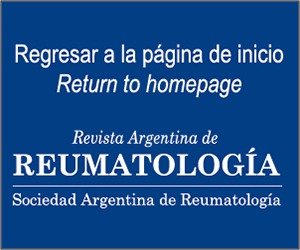CAPÍTULO 8: Estrategias para el diagnóstico de pacientes con espondiloartritis axial
Resumen
Se conoce que la manifestación clínica más relevante en la espondiloartritis axial (EspAax) es el dolor lumbar crónico, sobre todo cuando inicia en edades tempranas (antes de los 40 años) y tiene características inflamatorias. La prevalencia de dolor lumbar crónico en la población general puede llegar al 20%, según el rango etario y la región donde se pesquise, siendo menor en poblaciones latinoamericanas, sobre todo en pueblos originarios en donde puede estar presente entre el 11-19%. En un análisis retrospectivo del año 2000 de cohortes alemanas y austríacas, se halló una demora en el diagnóstico de 9 años. A pesar de los esfuerzos realizados para reducirla mediante el desarrollo de nuevos criterios clasificación y el advenimiento de nuevas herramientas complementarias, si bien se logró inicialmente reducir el tiempo a la mitad, la demora permaneció estable en la última década. Esta demora depende principalmente de la edad de inicio del dolor lumbar (más prolongada en más jóvenes), el género (más prolongado en mujeres) y la presencia o no de HLA-B27 (mayor en HLA-B27 negativos). Al analizar los factores asociados con la derivación de pacientes con posterior diagnóstico de espondilitis anquilosante (EA), el principal agente de salud involucrado es el reumatólogo, aunque los médicos de atención primaria juegan un rol preponderante. En un estudio realizado en Estados Unidos, los pacientes más jóvenes, de sexo masculino, con diagnóstico de uveítis y aquellos referidos por el médico de atención primaria se asociaron con más diagnósticos de EA. En este sentido, los fisioterapeutas, podrían también jugar un rol preponderante en la detección de pacientes jóvenes con dolor lumbar refractario al tratamiento kinésico.Citas
I. Meucci RD, Fassa AG, Faria NMX. Prevalence of chronic low back pain: systematic review. Rev Saude Pública. 2015;49:1.
II. Garcia JBS, Hernandez-Castro JJ, Nunez RG, Pazos MA, Aguirre JO, Jreige A, et al. Prevalence of low back pain in Latin America: a systematic literature review. Pain Physician. 2014;17(5):379-391.
III. Juárez V, Quintana R, Crespo ME, Aciar M, Buschiazzo E, Cucchiaro NL, et al. Prevalence of musculoskeletal disorders and rheumatic diseases in an Argentinean indigenous Wichi community. Clin Rheumatol. 2021;40(1):75-83.
IV. Peláez-Ballestas I, Navarro-Zarza JE, Julian B, Lopez A, Flores-Camacho R, Casasola-Vargas JC, et al. A community-based study on the prevalence of spondyloarthritis and inflammatory back pain in Mexicans. J Clin Rheumatol Pract Rep Rheum Musculoskelet Dis. 2013;19(2):57-61.
V. Poddubnyy D, Sieper J. Diagnostic delay in axial spondyloarthritis - a past or current problem? Curr Opin Rheumatol. 2021;33(4):307-312.
VI. Feldtkeller E, Bruckel J, Khan MA. Scientific contributions of ankylosing spondylitis patient advocacy groups: Curr Opin Rheumatol. 2000;12(4):239-247.
VII. Garrido-Cumbrera M, Poddubnyy D, Gossec L, Mahapatra R, Bundy C, Makri S, et al. Gender differences in patient journey to diagnosis and disease outcomes: results from the European Map of Axial Spondyloarthritis (EMAS). Clin Rheumatol. 2021;40(7):2753-2761.
VIII. Garrido-Cumbrera M, Poddubnyy D, Gossec L, Gálvez-Ruiz D, Bundy C, Mahapatra R, et al. The European Map of Axial Spondyloarthritis: Capturing the Patient Perspective-an Analysis of 2846 Patients Across 13 Countries. Curr Rheumatol Rep. 2019;21(5):19.
IX. Garrido-Cumbrera M, Navarro-Compán V, Bundy C, Mahapatra R, Makri S, Correa-Fernández J, et al. Identifying parameters associated with delayed diagnosis in axial spondyloarthritis: data from the European map of axial spondyloarthritis. Rheumatol Oxf Engl. 2022;61(2):705-712.
X. Deodhar A, Mittal M, Reilly P, Bao Y, Manthena S, Anderson J, et al. Ankylosing spondylitis diagnosis in US patients with back pain: identifying providers involved and factors associated with rheumatology referral delay. Clin Rheumatol. 2016;35(7):1769-1776.
XI. Seif G, Elliott J. Ankylosing spondylitis in a patient referred to physical therapy with low back pain. Physiother Theory Pract. 2012;28(1):63-70.
XII. Poddubnyy D, Sieper J. Mechanism of New Bone Formation in Axial Spondyloarthritis. Curr Rheumatol Rep. 2017;19(9):55.
XIII. van Tubergen A, Ramiro S, van der Heijde D, Dougados M, Mielants H, Landewé R. Development of new syndesmophytes and bridges in ankylosing spondylitis and their predictors: a longitudinal study. Ann Rheum Dis. 2012;71(4):518-523.
XIV. Maksymowych WP. Ankylosing spondylitis. Not just another pain in the back. Can Fam Physician. 2004;50:257-262.
XV. Poddubnyy D, Callhoff J, Spiller I, Listing J, Braun J, Sieper J, et al. Diagnostic accuracy of inflammatory back pain for axial spondyloarthritis in rheumatological care. RMD Open. 2018;4(2):e000825.
XVI. Wendling D, Prati C, Demattei C, Loeuille D, Richette P, Dougados M. Anterior chest wall pain in recent inflammatory back pain suggestive of spondyloarthritis. data from the DESIR cohort. J Rheumatol. 2013;40(7):1148-1152.
XVII. Schneeberger EE, Citera G, Buschiazzo E, Cayetti A, Zamora N, Sommefleck FA, et al. Impact of an awareness campaign for the detection of axial spondyloarthritis in patients with inflammatory back pain. J Rheumatol Arthritic Dis [Internet]. 2017;2(1).
XVIII. Sieper J, Srinivasan S, Zamani O, Mielants H, Choquette D, Pavelka K, et al. Comparison of two referral strategies for diagnosis of axial spondyloarthritis: the Recognising and Diagnosing Ankylosing Spondylitis Reliably (RADAR) study. Ann Rheum Dis. 2013;72(10):1621-1627.
XIX. Braun A, Saracbasi E, Grifka J, Schnitker J, Braun J. Identifying patients with axial spondyloarthritis in primary care: how useful are items indicative of inflammatory back pain? Ann Rheum Dis. 2011;70(10):1782–1787.
XX. Belachew DA, Sandu N, Schaller B, Guta Z. Ankylosing spondylitis in sub-Saharan Africa. Postgrad Med J. 2009;85(1005):353-357.
XXI. Registro Iberoamericano de Espondiloartritis (RESPONDIA): Argentina. Reumatol Clin. 2008;4 Supl 4:S23-9.
XXII. Brandt HC, Spiller I, Song IH, Vahldiek JL, Rudwaleit M, Sieper J. Performance of referral recommendations in patients with chronic back pain and suspected axial spondyloarthritis. Ann Rheum Dis. 2007;66(11):1479-1484.
XXIII. Poddubnyy D, Vahldiek J, Spiller I, Buss B, Listing J, Rudwaleit M, et al. Evaluation of 2 screening strategies for early identification of patients with axial spondyloarthritis in primary care. J Rheumatol. 2011;38(11):2452-2460.
XXIV. Deodhar A, Mease PJ, Reveille JD, Curtis JR, Chen S, Malhotra K, et al. Frequency of Axial Spondyloarthritis Diagnosis Among Patients Seen by US Rheumatologists for Evaluation of Chronic Back Pain. Arthritis Rheumatol Hoboken NJ. 2016;68(7):1669-1676.
XXV. Braun A, Gnann H, Saracbasi E, Grifka J, Kiltz U, Letschert K, et al. Optimizing the identification of patients with axial spondyloarthritis in primary care--the case for a two-step strategy combining the most relevant clinical items with HLA B27. Rheumatol Oxf Engl. 2013;52(8):1418-1424.
XXVI. del Río-Martínez P, Navarro-Compán V, Díaz-Miguel C, Almodóvar R, Mulero J, De Miguel E. Similarities and differences between patients fulfilling axial and peripheral ASAS criteria for spondyloarthritis: Results from the Esperanza Cohort. Semin Arthritis Rheum. 2016;45(4):400-403.
XXVII. Poddubnyy D, van Tubergen A, Landewé R, Sieper J, van der Heijde D. Assessment of SpondyloArthritis international Society (ASAS). Development of an ASAS-endorsed recommendation for the early referral of patients with a suspicion of axial spondyloarthritis. Ann Rheum Dis. 2015;74(8):1483-1487.
XXVIII. Ossum AM, Palm Ø, Lunder AK, Cvancarova M, Banitalebi H, Negård A, et al. Ankylosing spondylitis and axial spondyloarthritis in patients with long-term inflammatory bowel disease. Results from 20 years of follow-up in the IBSEN Study. J Crohns Colitis. 2018;12(1):96-104.
XXIX. Di Carlo M, Luchetti MM, Benfaremo D, Di Donato E, Mosca P, Maltoni S, et al. The DETection of Arthritis in Inflammatory boweL diseases (DETAIL) questionnaire: development and preliminary testing of a new tool to screen patients with inflammatory bowel disease for the presence of spondyloarthritis. Clin Rheumatol. 2018;37(4):1037-1044.
XXX. Variola A, Zanolin ME, Cipriano G, Macchioni P, Martinis F, Pasetti A, et al. The IBIS-Q [IBd Identification of Spondyloarthritis Questionnaire]. A novel tool to detect both axial and peripheral arthritis in inflammatory bowel disease patients. J Crohns Colitis. 2020;14(12):1680-1686.
XXXI. Sanz Sanz J, Juanola Roura X, Seoane-Mato D, Montoro M, Gomollón F. Screening of inflammatory bowel disease and spondyloarthritis for referring patients between rheumatology and gastroenterology. Gastroenterol Hepatol. 2018;41(1):54-62.
XXXII. Haroon M, O’Rourke M, Ramasamy P, Murphy CC, FitzGerald O. A novel evidence-based detection of undiagnosed spondyloarthritis in patients presenting with acute anterior uveitis: the DUET (Dublin Uveitis Evaluation Tool). Ann Rheum Dis. 2015;74(11):1990-1995.
XXXIII. Mitulescu CT, Popescu CC, Oprea CL, Predețeanu D, Istrate S, Ciuluvică R, et al. A referable clinical pattern of spondyloarthritis-associated uveitis. Rom J Ophthalmol. 2018;62(2):155-161.
XXXIV. Wang R, Crowson CS, Wright K, Ward MM. Clinical evolution in patients with new-onset inflammatory back pain: a population-based cohort study. Arthritis Rheumatol. 2018;70(7):1049-1055.
Derechos de autor 2024 a nombre de los autores. Derechos de reproducción: Sociedad Argentina de Reumatología

Esta obra está bajo licencia internacional Creative Commons Reconocimiento-NoComercial-SinObrasDerivadas 4.0.






